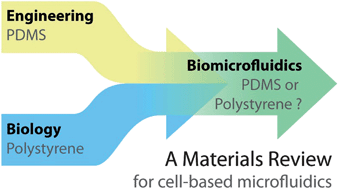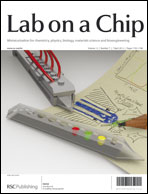As the integration of microfluidics into cell biology research proceeds at an ever-increasing pace, a critical question for those working at the interface of both disciplines is which device material to use for a given application. While PDMS and soft lithography methods offer the engineer rapid prototyping capabilities, PDMS as a material has characteristics that have known adverse effects on cell-based experiments. In contrast, while polystyrene (PS), the most commonly used thermoplastic for laboratory cultureware, has provided decades of grounded and validated research conclusions in cell behavior and function, PS as a material has posed significant challenges in microfabrication. These competing issues have forced microfluidics engineers and biologists to make compromises in how they approach specific research questions, and furthermore, have attenuated the impact of microfluidics on biological research. In this review, we provide a comparison of the attributes of PDMS and PS, and discuss reasons for their popularity in their respective fields. We provide a critical evaluation of the strengths and limitations of PDMS and PS in relation to the advancement and future impact on microfluidic cell-based studies and applications. We believe that engineers have a responsibility to overcome any challenges associated with microfabrication, whether with PS or other materials, and that engineers should provide options and solutions that assist biologists in their experimental design. Our goal is not to advocate for any specific material, but provide guidelines for researchers who desire to choose the most suitable material for their application, and suggest important research directions for engineers working at the interface between microfabrication technology and biological application.

You have access to this article
 Please wait while we load your content...
Something went wrong. Try again?
Please wait while we load your content...
Something went wrong. Try again?


 Please wait while we load your content...
Please wait while we load your content...